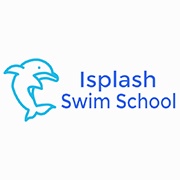SwimSafer Programme
What is the SwimSafer Programme?
The SwimSafer Programme is Singapore’s national water safety and swim instruction programme, championed by Sports Singapore and Singapore Aquatics (SAQ). It is specifically designed to equip children and youths with essential swimming techniques, water survival skills, and water safety knowledge. Delivered in a progressive, structured, and engaging format, the programme aims to build confidence in the water while reducing the risk of drowning among young learners.
As a key initiative under the Swim Singapore framework, the SwimSafer Programme plays a vital role in promoting lifelong water safety habits from an early age. It not only focuses on skill development but also reinforces awareness, responsibility, and safety in aquatic environments.
SwimSafer 2.0, consists of six progressive stages, each with defined competencies and performance benchmarks. Students will gradually develop proficiency in various swim strokes, survival strategies, and basic rescue techniques — with every stage building on the foundation of the previous one. These stages are carefully designed to match a child’s physical and cognitive development, ensuring safe and effective progression through the programme.
From July 2025, Singapore Aquatics (SAQ) transitioned all SwimSafer assessments to the new Centralised Assessment Management System (CAMS). This change marks the discontinuation of the previous assessment model — familiar to many parents — which officially ended on 31 December 2024.
At Isplash Swim School, our kids swimming lessons are conducted in line with the latest guidelines of the SwimSafer Programme.
Key Differences Between CAMS and the Previous Assessment Model
1. Designated Test Venues
Under the previous system, SwimSafer assessments could be conducted at any ActiveSG swimming complex. With CAMS in place, all private SwimSafer tests are now conducted exclusively at five designated ActiveSG pools, and only on specific allocated dates.
The five approved venues are:
This ensures centralised coordination and standardised testing conditions.
2. Independent Assessment Process
Previously, SwimSafer tests for students were organised by their coaches, with assessments conducted in collaboration with appointed SwimSafer assessors.
Under the CAMS system, all assessments are carried out exclusively by independent assessors appointed by Singapore Aquatics (SAQ). Coaches are no longer required to be present during the test, ensuring a more impartial evaluation process.
3. Revised SwimSafer Manual and Test Criteria
Alongside the rollout of CAMS, an updated SwimSafer Manual will also take effect from 1 July 2025. The revised manual introduces stricter performance benchmarks and clearer evaluation criteria across all six stages. These changes aim to ensure that SwimSafer certifications better reflect a participant’s competency and readiness in real-life water situations.
Six SwimSafer 2.0 Stages
-
SwimSafer Stage 1
This stage aims to help participants build water confidence and independence, while acquiring essential safety skills for both shallow and deep water. Students will be taught key techniques such as safe water entry and exit, navigating forward and backward in the water, and practicing basic personal water safety skills.
-
SwimSafer Stage 2
This stage focuses on developing core aquatic skills such as unassisted step entry, sculling, feet-first surface dives, and essential personal water safety techniques. Learners will also be introduced to safety awareness in different aquatic environments, with one of the key milestones being the ability to swim 25 meters continuously.
-
SwimSafer Stage 3
At this stage, learners will be introduced to advanced entry techniques such as the stride jump. They will continue to develop water proficiency through skills like sculling, underwater movement, and the use of a personal flotation device (PFD) — including how to put it on while in the water and swim with it. A key objective is to build endurance, with the goal of swimming 50 meters continuously.
-
SwimSafer Stage 4 (Bronze)
This stage emphasises the refinement of stroke techniques and the development of coordinated breathing in deep water. Learners will be introduced to throw rescue techniques and advance their personal survival skills. A key milestone at this level is the ability to swim 100 meters using a combination of different strokes.
-
SwimSafer Stage 5 (Silver)
At this stage, students will be introduced to the fundamentals of diving (crouching) and continue to build on their personal survival skills within realistic scenarios — such as responding to a simulated situation like escaping from a sinking boat. Learners must demonstrate strong technique and endurance by swimming 200 meters using a variety of strokes within a specified time limit.
-
SwimSafer Stage 6 (Gold)
In this advanced (final) stage, participants must demonstrate endurance and efficiency by performing a variety of swim strokes over a total distance of 400 metres, each within a set time frame. The focus on personal survival skills continues, with learners being taught how to convert clothing into a flotation aid and swim with it, how to correctly put on a life jacket while in the water, and how to perform the Heat Escape Lessening Posture (H.E.L.P.) to minimise heat loss in cold water.
Enquiries
